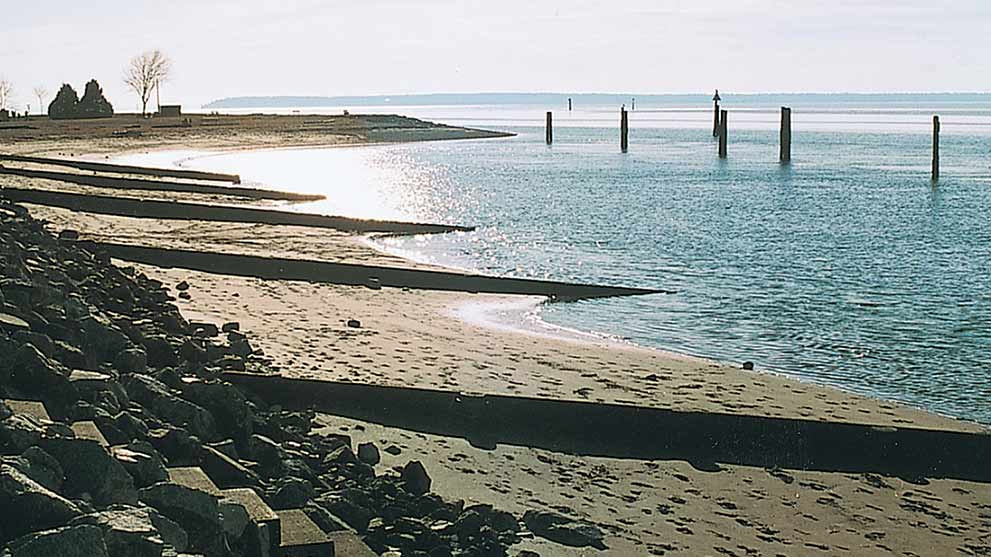As the climate changes, coastal communities can expect more flooding due to storm surge and sea level rise. Managing this risk requires adaptation--actions that reduce the exposure and vulnerability of people and property to climate-related hazards and increase resilience to cope with their impacts. The City of Surrey's Coastal Flood Adaptation Strategy, initiated in 2016, is an example of a robust, participatory planning initiative that identified short, medium and long-term options to adapt to climate change risk. We spoke with Matt Osler, Senior Project Engineer, about the Strategy.

Crescent Beach, one of Surrey's coastal adaptation sites. Photo Credit: City of Surrey
Q: What triggered the start of this project?
A: In 2011, the provincial government released a couple of reports concluding that local governments should prepare for at least 1 meter of sea level rise (SLR) by 2100. The cost of adaptation across the province was estimated at $9.5 billion, of which Surrey’s coastal floodplain comprised $1.5 billion. Given this large investment, we wanted to make sure our investments climate adaptation efforts would meet the needs of the community. This was how we got started on the Coastal Flood Adaptation Strategy (CFAS).
We secured funding from the Federation of Canadian Municipalities' "Municipalities for Climate Innovation Program" and earmarked some municipal revenue streams for climate adaptation in order to follow-through with this project.
Q: Community engagement has been a key objective throughout this project. How have residents and stakeholders responded to the project? Have perceptions changed over time?
A: Tracking how perceptions change over time is very important. The project involved an online survey, in which we asked residents to rate how important SLR is compared to other issues Surrey is facing. Initially, 53% of respondents ranked coastal change and SLR as equal or greater to other issues Surrey was facing.
After a long period of engagement, educational activities, workshops, focus groups, dialogues and parsing through potential solutions, we released another online survey and asked respondents to rate their preferred adaptation solutions. This time, the level of interest in coastal flood adaptation relative to other issues jumped from 53% to 73%. So the engagement process was effective in changing public and stakeholder perceptions.
Q: How has the CFAS team worked to change the public’s perception of the more socially or economically challenging adaptation options?
A: What is important in these conversations is that people understand adaptation is a journey.
The process of coming up with options for climate adaptation and SLR is iterative. We have to give each sector involved a chance to really refine the options and make them as acceptable as possible. Some of the solutions we have come up with have yet to be adopted in our region, so experts with international experience worked with different sectors of stakeholders and the public to talk openly about the issues we face, how they impact us, and then find pathways forward.
This dialogue on solutions has been effective. We discovered that while these discussions are often emotional, people like talking about solutions to the problem more than the hazards themselves. The public is overwhelmed with so many hazard assessments and flood mapping projects, but when people see real solutions to problems that impact them, they get excited and involved.
Providing stakeholders with the information they need and then supporting the discussion empowers people to take the steps to make their own lives more resilient without the city responsible for implementing solutions. For example, we have a coastal homeowner in the process of applying for rezoning in order to re-build their home in a more resilient way to SLR and coastal flooding.
In short, as people gain more knowledge about the options open to them, perceptions will inevitably change along with preferred methods of adaptation.
Q: What has been the most challenging stage of this project since 2016?
A: The online survey was challenging because we recognize we are competing for peoples’ time and attention. Most stakeholders don’t have the time to complete a one hour survey, so the challenging part was condensing complex issues as succinctly as possible, then communicating them effectively in order to receive meaningful feedback through the survey.
To overcome this challenge, we have a cross-departmental Project Steering Committee with a variety of backgrounds from planning to engineering to communications that provides input on project materials and the process. They help us stay true to the technical side of the issues we face, while still communicating complex technicalities in a way everyone can understand.
Q: What advice would you give to other coastal communities looking to move forward with climate adaptation and flood risk reduction initiatives?
A: Adaptation is constantly evolving and developing and fostering relationships with technical experts, academic partners, NGOs and community champions is critical to succeed. These partnerships have helped our project create better solutions and is supporting implementation on the ground. It has been very beneficial for us to have many perspectives contributing to the project over time in their own unique ways.
Overview of City of Surrey's Coastal Flood Adaptation Strategy
For more information about Surrey’s ongoing Coastal Flood Adaptation Strategy, visit their website. You will find background about the project and have access to resources including presentations, workshop and consultation reports, supporting strategies and in-depth details about the adaptation options for Surrey’s Mud Bay, Crescent Beach and Semiahmoo Bay communities.